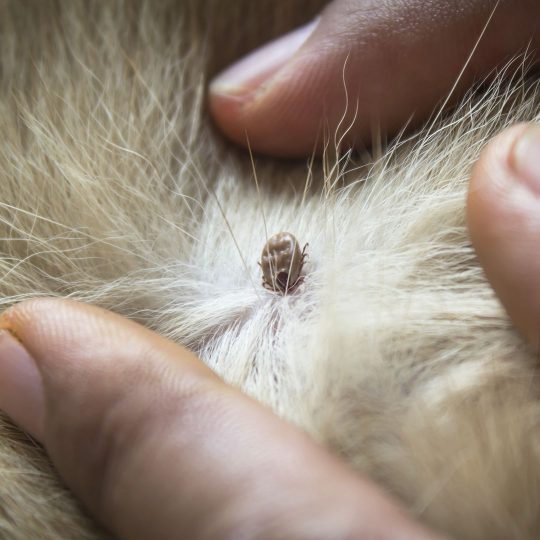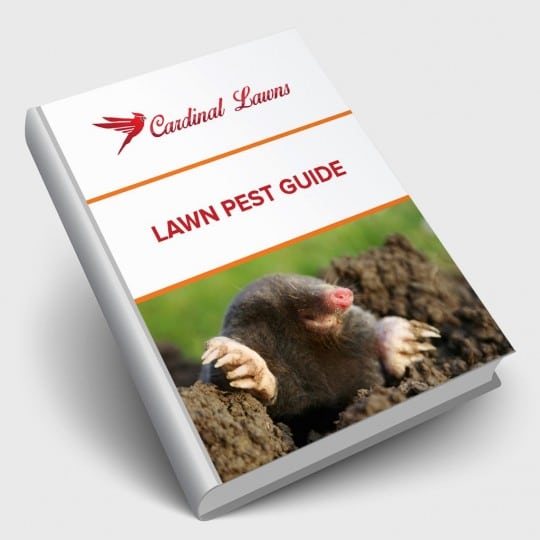Pest Spotlight: Fleas and Ticks
How to Protect Your Pets and Family
Posted
June 1, 2017

Spring and summer are the seasons when most people start thinking about fleas and ticks—especially if there are pets in the house. But depending on where you live, these lawn pests could hang around all year.
The Rundown on Fleas
There are thousands of kinds of fleas, but it only takes one type to cause problems for you and your pet. Fleas can travel from animal to animal, person to person, and yard to yard. Stray animals and wildlife can be carriers and deposit fleas and/or their eggs into your area. The itch you and your pet feel from fleas are caused by an allergic reaction. When fleas bite, they inject saliva into the skin—these salivary proteins are often allergenic. The most common skin disease for dogs and cats is flea allergy dermatitis, which causes pets to bite, scratch, and even lose their hair. To help keep fleas away, make sure your pet has the proper flea treatments and keep your home clean and dry.
How Ticks Tick
Walking through the woods or high grass areas could result in catching a questing tick. Ticks crawl up on low shrubs and grass and then dislodge onto a tasty passerby. There are many tick-transmitted diseases that humans and pets can contract, including Lyme disease, Rocky Mountain spotted fever, tularemia, and more. The best way to protect yourself is to cover exposed skin when walking through wooded areas, and treat your pets with a vet-recommended tick treatment.
Controlling Fleas and Ticks in the Yard
The flea and tick population varies greatly depending on where you live. The season, climate, and weather conditions can determine how bad the fleas or ticks will be in a certain area. The types of fleas and ticks can also vary.
Like many lawn pests, one of the best ways to control the population is to keep your lawn healthy. Cut tall grass, trim back bushes and shrubs, and rake leaves under the bushes. Fleas and ticks are sensitive to light and humidity. They usually hide out in shady areas under plants, porches, and in other protected places. There are some lawn and garden insecticides that can be applied in these shady spots. Any sprays should be left to dry for several hours before people or pets are allowed back in the area.

Download Your FREE Lawn Pest Guide
Pests become most prevalent during the heat and humidity of summer. Take some time to learn about the signs of infestations before any damage can be caused to your landscape. This handy guide will teach you how to spot common lawn pests and how to keep them from causing harm to you and your property.